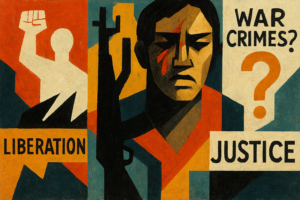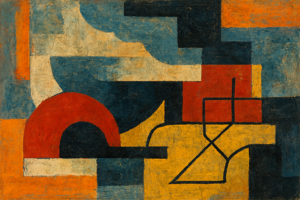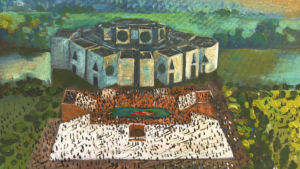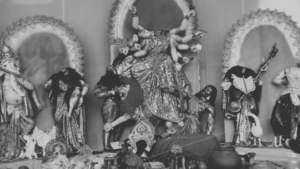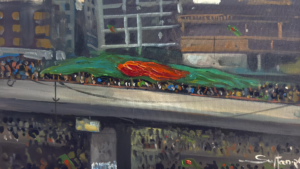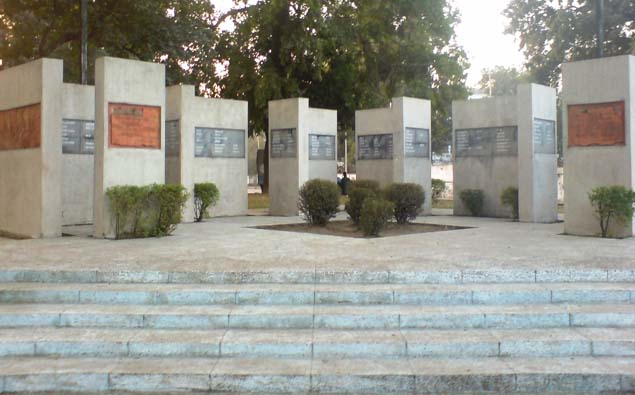
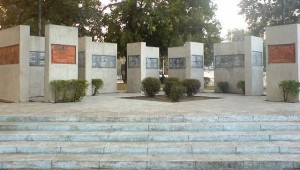 Few universities can match what Dhaka University has achieved since its inception. It was established in 1921, but in less than a hundred years of its establishment it has made significant contributions to the history of Bangladesh, particularly in the making of the nation. Two events are noteworthy.
Few universities can match what Dhaka University has achieved since its inception. It was established in 1921, but in less than a hundred years of its establishment it has made significant contributions to the history of Bangladesh, particularly in the making of the nation. Two events are noteworthy.
The first one relates to the historic language movement in 1952, when students of Dhaka University laid down their lives for making Bangla as one of the national languages of the state of Pakistan. The event is now nationally observed on 21 February and Dhaka University is the official host of the event. National leaders, foreign dignitaries and millions of people, all barefooted, congregate at the footsteps of the Shaheed Minar (Martyrs Monument) located at Dhaka University on 21 February to pay homage to the “brave sons of the soil.” It may be mentioned that UNESCO has declared the day as the International Mother Language Day. Dhaka University can take pride in hosting the event and having the day internationally recognised.
Secondly, Dhaka University is the only university in the world where the students raised the flag of the country and handed it over to the national leaders. This took place on 2 March 1971, incidentally several weeks before Pakistan military’s recourse to genocide and the proclamation of independence. This flag became the rallying call for independence and the symbol of the new nation during the nine-month liberation struggle.
On the night of 25 March 1971 Dhaka University became a predictable target of the Pakistan military. But who were the victims? In a multi-class society subalternity could never be uni-dimensional or linear. Given the semi-colonial experience of the Bengalis, the Awami League could easily muster support in favour of a ‘nationalist’ campaign against the repressive state of Pakistan. The campaign was summed up in the Six-Point program, incidentally launched in 1966, which later became the agenda of the party in the general elections in 1970. The cry of ‘Joy Bangla’ in fact, symbolized the nationalist aspirations of the people, mainly to overcome the semi-coloniality of the nation. But the semi-colonial experience was only one aspect of subalternity of the Bengalis. The society had other subaltern layers, mainly the disempowered, marginalized population. But then, how obvious were these in times of genocide? Or, to put it slightly differently, is there a wilful blurring of subalternity on the part of the state and statist discourses? And if so, what does it signify? The mass murder at the hands of the Pakistan military in Dhaka University does shed some light on this.
M.A. Rahim, a professor of history, while reflecting on the ‘last sixty years’ (1921-1981) of Dhaka University and the role the latter played in the nationalist movement culminating in 1971, stated:
The Dacca University Campus was made one of the principal targets of attack by the army. The military leaders considered that the Dacca University was the centre of the Bangladesh movement, and hence intended to cleanse it once and for all….It is estimated that about 200 students were killed in the Iqbal Hall (later Zahurul Haq Hall). Many of these dead bodies were removed by the soldiers. Two days after 30 bodies were found still lying there….It is estimated that about 300 persons, including 10 teachers and 26 other employees were killed in the University on the night of 25th and in the morning of 26th March.
The commentary of US Consul General, Archer K. Blood, on the Pakistan military’s attack on the University was more telling:
We saw traces of two mass graves in the campus, one near Iqbal Hall, the other near Rokeya Hall….The students at Iqbal Hall, some of who had weapons, were either shot in their rooms or mowed down when they came out of the building in groups. Rokeya Hall, a dormitory for girl students, was set ablaze and the girls were machine gunned as they fled the buildings. The attack seemed to be aimed at eliminating the female student leadership since many girl student leaders resided in that Hall.
Both the accounts give an impression that the University was at the ‘centre’ of the movement and that the Pakistan military was targeting the ‘armed students’ residing there. There is an element of truth in so far as the first account goes but not so much in the second account. The victims, apart from faculty members and students, included caretakers, gardeners, security guards, sweepers, canteen owners and even peons. Put differently, not only scholars and students but also unarmed and relatively marginalized people were brutally murdered.
A critical question however remains, what role must Dhaka University play for being what can be regarded as an epicentre of genocide? It is an irony and somewhat sad that such a question is raised nearly four decades after the gruesome killing of its members, which included gardeners, peons, caretakers, security guards, canteen owner, students, teachers, officials, and many more. One thing is certain that Dhaka University as the epicentre of genocide and for sacrificing so much for the cause of democracy and emancipation has a lot to offer not only to the nation and the world but to humanity as a whole. And it is precisely for this that the authorities of Dhaka University, indeed, with active support from faculty members, campus officials, family members, even students, old and new, and the society at large have embarked upon the noble task of establishing a Centre for Genocide Studies within the premise of its campus.
The Centre shall be a non-profitable, nonpolitical research based academic institution of professionals, researchers, planners, policy makers and academics. To make its task unique in this part of the world, the Centre for Genocide Studies at the University of Dhaka has a declaratory mandate to perform four sets of activities.
First is research. Apart from having critical research on 1971 Bangladesh genocide and the ones that occurred elsewhere in the past or since then, there should be a concerted effort to collect the ‘life stories’ of each and every dead and living victim as well as of perpetrators of Bangladesh genocide. In fact, students each year of various faculties will be mobilized to work on this time consuming task. This would not only bring down the cost of the research but would also allow the students to be exposed to what is certainly a tragic episode in the country’s history.
Second is teaching. Courses of all kinds, semester-wise or year-long, including those designed for the professionals, will be offered by the Centre for Genocide Studies. Such courses on genocide and mass violence need not be limited to social science students but would also be offered to the students of science and business faculties. It may be mentioned that given the task of unearthing mass graves and various killing fields specialized branches like forensic medicine, forensic science, forensic anthropology or forensic pathology will be developed at the Centre for Genocide Studies. This would certainly attract students from diverse faculties.
Third is having ‘genocide tour’ for the public. The birth of Bangladesh, as indicated earlier, cannot be contemplated without taking into consideration the glorious role and the painful sacrifice of Dhaka University. As a result the campus has become a destination for the tourists, both local and foreign. But such touristic exposure of Dhaka University needs to be made more informative, authentic and efficient, and the Centre for Genocide Studies with student-volunteers as tour guides can certainly play a role.
Last but not least is housing a genocide museum and an archive. The Centre for Genocide Studies will take the responsibility of attracting a large number of people from within the country and beyond for collecting genocidal relics and printed and visual materials of all kinds, including posters, photos and pamphlets, relating to genocide and mass violence. And this need not be of Bangladesh alone but would be of places and times wherever state machineries and vested quarters have unleashed their darkest side of being and resorted to torture, rape, killing and other forms of mass violence. A cue could be taken from various genocidal museums around the world, including Tuol Sleng Genocide Museum in Phnom Penh (Kampuchea), Kigali Memorial Centre in Kigali City (Rwanda), Armenian Genocide Museum of America and Holocaust Museum both in Washington DC (USA). A critical awareness of genocide and mass violence is bound to embolden the person engaged in the vital task of putting an end to all crimes against humanity. As the epicentre of genocide let Dhaka University and the Centre for Genocide Studies embark upon this noble task!
First Published in the Daily Star on December 16, 2012.

